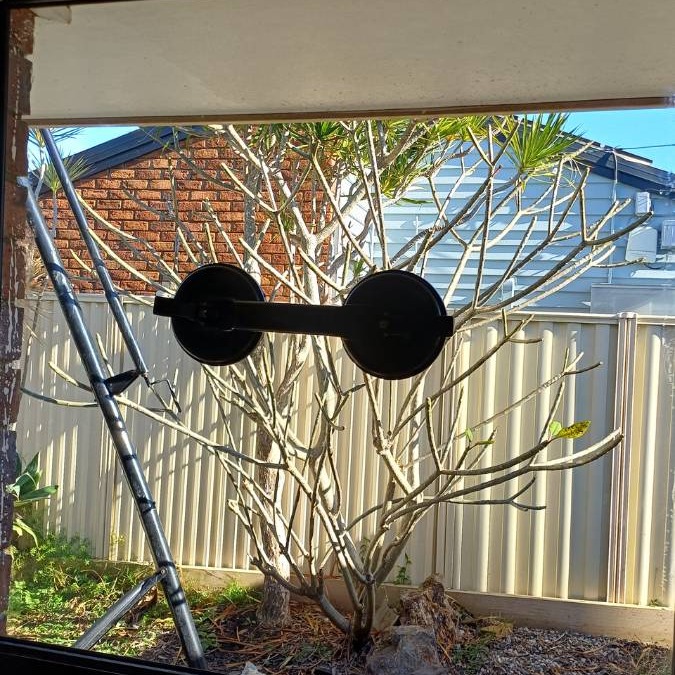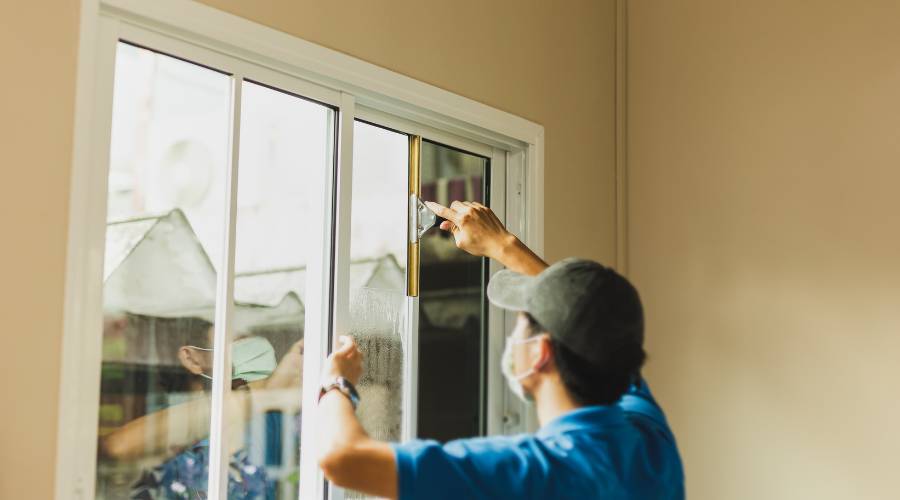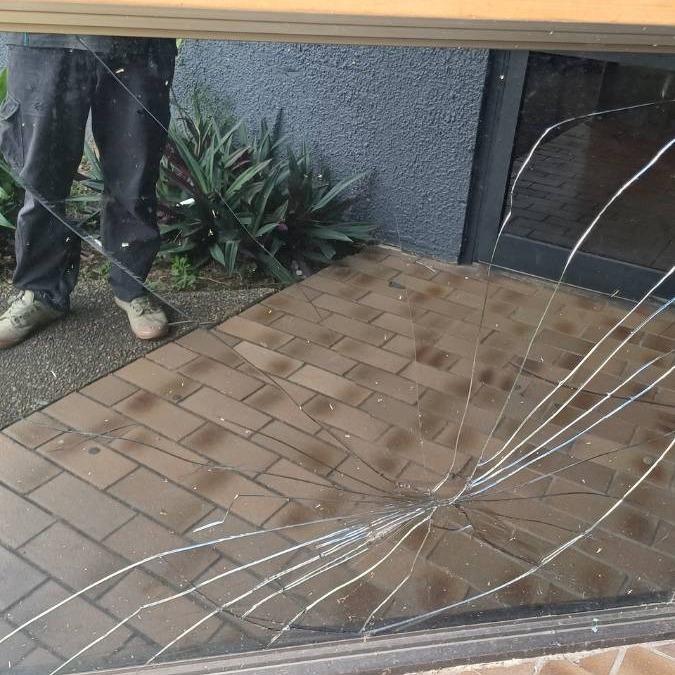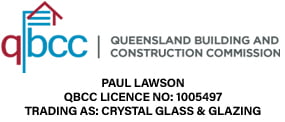Brisbane’s storm season brings some of the most intense weather in Australia – sudden temperature drops, golf ball-sized hail, and winds that can turn outdoor furniture into projectiles. After 30 years of emergency glass repairs following Brisbane storms, I’ve seen the same patterns repeat: families who prepare their windows suffer minimal damage, whilst those caught off-guard face weeks of repairs and thousands in costs.
Understanding Brisbane’s Unique Storm Patterns
Brisbane’s geographic position creates storm conditions that are particularly challenging for residential glazing, requiring specific preparation strategies that work for our local climate.
The Brisbane Storm Corridor Effect
Brisbane sits in a natural storm corridor where systems intensify as they move inland from Moreton Bay. This creates several high-risk periods throughout the storm season when glass damage becomes almost predictable.
Peak risk periods:
- Late October to early December: Initial storm season with unexpected intensity
- January to March: Peak season with regular severe weather
- Late March to April: Final intense storms before season ends
Geographic risk factors:
- Western suburbs: Receive storms first with maximum intensity
- Ridge-top properties: Experience strongest winds and debris impact
- Creek and river areas: Face additional flooding and debris risks
Brisbane’s Hail Damage Patterns
Queensland produces some of Australia’s largest hail, and Brisbane homes face specific hail damage patterns based on storm approach directions and local topography.
Common hail sizes affecting Brisbane:
- 20-30mm: Damages older single-glazed windows and skylights
- 40-50mm: Cracks modern double-glazed units and safety glass
- 60mm+: Destroys most residential glazing regardless of type
Hail damage factors:
- Wind direction: Determines which sides of homes receive direct impact
- Property elevation: Higher properties experience larger hail sizes
- Surrounding structures: Buildings and trees can provide partial protection
Sudden Temperature Drop Effects
Brisbane storms can drop temperatures by 15-20 degrees in minutes, creating thermal shock that cracks glass even without direct impact damage.
Thermal shock conditions:
- Afternoon timing: Hot glass suddenly cooled by storm systems
- Large glass areas: Floor-to-ceiling windows most susceptible
- Poor quality installations: Cheap glass more likely to fail under thermal stress
Pre-Season Window Protection Strategies
Protecting Brisbane windows from storm damage starts months before the first severe weather warning, with systematic preparation that addresses both immediate and long-term protection needs.
Professional Window Assessment
Annual pre-season window assessment identifies vulnerabilities before storms arrive, enabling cost-effective improvements that prevent expensive emergency repairs.
Assessment checklist:
- Glass condition: Existing cracks or stress points that storms will exploit
- Frame integrity: Loose or deteriorated frames that compromise glass security
- Seal condition: Failed seals that allow water penetration during storms
- Installation quality: Poor previous work that creates weak points
Professional benefits:
- Risk prioritisation: Focus protection efforts on most vulnerable areas
- Cost-effective solutions: Preventive maintenance costs less than emergency repairs
- Insurance documentation: Professional assessments support insurance claims
Storm Shutter and Protection Systems
Physical protection systems provide the most reliable defence against Brisbane’s severe storms, particularly for high-risk properties and valuable glass installations.
Temporary protection options:
- Plywood boarding: Cost-effective for occasional use, requires storage and installation time
- Fabric storm screens: Flexible protection that reduces wind load whilst maintaining some visibility
- Removable metal screens: Durable protection for regularly exposed properties
Permanent protection systems:
- Built-in shutters: Convenient protection that’s always available but represents significant investment
- Security screens: Daily security benefits with storm protection capability
- Awnings and eaves: Architectural solutions that provide partial protection whilst enhancing property
Glass Upgrade Strategies
Modern glass technologies provide significant storm resistance improvements over older installations, often making upgrades cost-effective compared to repeated repairs.
Storm-resistant glass options:
- Laminated glass: Stays together when broken, preventing dangerous glass fall and weather penetration
- Impact-resistant glazing: Specifically designed to handle debris impact without failure
- Thicker glass specifications: Increased thickness provides better impact and pressure resistance
Upgrade prioritisation:
- Large exposed windows: Greatest risk and damage potential
- Entry areas: Critical for security and weather protection
- Upper floor windows: Difficult and expensive to repair after damage
Emergency Response When Storm Glass Breaks
When Brisbane storms damage your windows, the first few hours determine whether you face minor repairs or major secondary damage from weather exposure.
Immediate Safety Response
Storm-damaged glass creates immediate safety hazards that require careful management, particularly when family members or pets might contact broken glass areas.
Safety priorities:
- Secure the area: Keep people and pets away from broken glass zones
- Document damage: Photograph everything before cleanup for insurance purposes
- Assess structural integrity: Large windows may affect building structural loads
Emergency cleanup:
- Wear protection: Closed shoes, long pants, and eye protection during cleanup
- Work systematically: Clear glass from outside in, preventing spreading dangerous fragments
- Dispose safely: Wrap glass fragments in newspaper or cardboard before binning
Temporary Weather Protection
Professional temporary protection prevents secondary damage whilst permanent repairs are arranged, potentially saving thousands in additional damage costs.
Professional boarding services:
- Immediate response: 24/7 emergency boarding for severe weather exposure
- Proper materials: Weather-resistant boarding that handles continued storms
- Secure installation: Professional fastening that won’t fail in ongoing severe weather
DIY temporary measures:
- Plastic sheeting: Immediate protection for small areas using proper taping techniques
- Plywood installation: Requires appropriate fasteners and sealing for effectiveness
- Tarpaulin coverage: Short-term protection whilst arranging professional boarding
Professional Emergency Assessment
Qualified emergency assessment determines repair priorities, identifies hidden damage, and provides documentation supporting insurance claims.
Assessment benefits:
- Hidden damage identification: Structural issues not obvious to untrained eyes
- Repair prioritisation: Most critical repairs first to prevent additional damage
- Insurance support: Professional documentation supports faster claims processing
- Cost management: Accurate assessment prevents unnecessary or inadequate repairs
Insurance Claims for Storm Glass Damage
Navigating insurance claims for Brisbane storm damage requires understanding insurer requirements, documentation needs, and common claim complications that delay settlements.
Immediate Documentation Requirements
Insurance companies require specific documentation for storm glass damage claims, and gathering this information immediately after damage occurs ensures smoother claims processing.
Essential documentation:
- Damage photographs: Multiple angles showing extent and cause of damage
- Weather reports: Bureau of Meteorology data confirming severe weather in your area
- Property photos: Before and after images showing impact on property
- Professional assessments: Qualified glazier reports on damage extent and causes
Documentation tips:
- Date and time stamps: Ensure all photos include metadata showing when taken
- Multiple perspectives: Show damage from inside and outside affected areas
- Context images: Wide shots showing property location and surrounding damage
- Detail shots: Close-ups of specific damage points and glass failure patterns
Common Insurance Claim Issues
Understanding frequent claim complications helps Brisbane homeowners avoid delays and ensure fair settlements for storm glass damage.
Frequent complications:
- Gradual deterioration vs storm damage: Insurers may dispute whether damage resulted from the storm or existing deterioration
- Inadequate temporary protection: Failing to protect property after initial damage can void coverage for secondary damage
- Delayed reporting: Late claim reporting can complicate damage assessment and coverage determination
- Insufficient documentation: Poor documentation makes it difficult to prove extent and cause of damage
Avoidance strategies:
- Report immediately: Contact insurers within 24 hours of damage discovery
- Professional assessment: Qualified glazier reports strengthen claims and speed processing
- Follow instructions: Comply with all insurer requirements for temporary protection and additional damage prevention
- Keep records: Maintain detailed records of all communications and requirements
Maximising Insurance Settlements
Understanding insurance assessment processes and coverage details helps ensure fair settlements that fully cover necessary repairs and improvements.
Settlement optimisation:
- Professional repair quotes: Multiple qualified glazier quotes demonstrate fair market pricing
- Upgrade justifications: Document when current building codes require upgrades from original installations
- Consequential damage: Include all damage resulting from initial glass failure, including water damage and secondary breakage
- Professional advocacy: Qualified glaziers familiar with insurance processes can advocate for appropriate settlements
Post-Storm Glass Replacement Strategies
After Brisbane storms, glass replacement demand often exceeds supply, making strategic planning essential for timely, cost-effective repairs that improve storm resistance.
Repair Prioritisation
Limited glazier availability after major Brisbane storms requires strategic prioritisation of repairs to maintain security whilst managing costs and timelines effectively.
Priority ranking:
- Security vulnerabilities: Entry points and ground-floor access requiring immediate attention
- Weather exposure: Areas where ongoing weather can cause additional damage
- Safety hazards: Broken glass that poses ongoing injury risks to occupants
- Functional necessities: Windows essential for ventilation, lighting, or daily activities
Temporary vs permanent solutions:
- Quality boarding: Professional temporary protection for non-critical areas whilst prioritising permanent repairs
- Staged replacement: Systematic replacement starting with highest priority areas
- Upgrade opportunities: Using insurance settlements to improve storm resistance during replacement
Choosing Storm-Resistant Replacements
Post-storm replacement provides opportunities to improve future storm resistance through upgraded glass specifications and installation methods.
Storm-resistant options:
- Laminated glass: Improved impact resistance and post-failure safety
- Thicker specifications: Enhanced resistance to pressure and debris impact
- Better framing: Improved installation methods that handle storm loads more effectively
- Professional installation: Quality workmanship that performs better in future storms
Cost-benefit analysis:
- Insurance coverage: Understanding what upgrades insurance will cover vs out-of-pocket costs
- Long-term savings: Higher upfront costs vs reduced future storm damage and repair costs
- Property value: Storm-resistant improvements that enhance property value and insurability
Working with Emergency Glaziers
Major Brisbane storms create high demand for glazier services, making selection of qualified professionals critical for quality repairs and fair pricing.
Choosing emergency glaziers:
- Local reputation: Established Brisbane glaziers with community references
- Insurance experience: Familiarity with insurance claim processes and requirements
- Quality standards: Commitment to proper materials and installation methods despite time pressures
- Fair pricing: Reasonable emergency rates without exploitation of storm damage situations
Red flags to avoid:
- Door-to-door solicitation: Reputable glaziers don’t need to solicit work after storms
- Pressure tactics: Professional glaziers provide quotes without high-pressure sales techniques
- Cash-only requirements: Legitimate businesses accept standard payment methods
- Unusually low prices: Quality storm repairs have market-standard costs
Building Long-Term Storm Resilience
Learning from Brisbane storm experiences enables homeowners to build long-term resilience that reduces future damage and improves property performance during severe weather.
Systematic Property Hardening
Comprehensive approach to storm resistance addresses all vulnerable points rather than just replacing damaged areas, creating overall property resilience.
Hardening strategies:
- Vulnerable area identification: Systematic assessment of all potential storm damage points
- Staged improvements: Multi-year improvement plans that spread costs whilst building resilience
- Integration opportunities: Combining storm protection with other property improvements for cost efficiency
- Professional planning: Expert advice on most effective resilience investments for your specific property
Maintenance Programs
Regular maintenance prevents small vulnerabilities from becoming major storm damage points, whilst ensuring improvements continue performing effectively.
Maintenance priorities:
- Seasonal inspections: Pre-storm season assessment and preparation
- Frame and seal maintenance: Preventing deterioration that compromises storm resistance
- Glass condition monitoring: Early identification of stress cracks or impact damage
- Installation integrity: Ensuring fasteners and supports remain secure and effective
Community Resilience Building
Neighbourhood-level storm resilience benefits everyone through shared knowledge, bulk purchasing opportunities, and mutual support during emergencies.
Community strategies:
- Shared experiences: Learning from neighbours’ storm damage and protection successes
- Group purchases: Bulk buying of storm protection materials and services
- Emergency cooperation: Coordinated response plans that help everyone recover faster
- Information sharing: Community knowledge about effective glaziers, suppliers, and protection methods
Preparing for Brisbane’s next storm season? Crystal Glass provides comprehensive storm damage prevention, emergency response, and resilient replacement services that protect your property and family. Contact us for a pre-season window assessment and storm protection consultation tailored to Brisbane’s unique weather challenges.












